Wait…there’s a difference between disordered eating and eating disorders? Aren’t they the same thing?
On the blog, we talk a lot about eating disorders and disordered eating, but we have not talked in detail what these terms really mean. Eating disorders and disordered eating are actually different from one another. The simple answer is that an eating disorder is a clinical diagnosis, whereas disordered eating is not. It’s helpful to think of a spectrum of eating, with “normal” intuitive eating on one end and eating disorders on the other. Disordered eating falls somewhere in between the two, whereas eating disorders are an extreme form of disordered eating.
Watch the Video!
Eating Disorders
Eating disorders are often evidenced by extreme concerns related to eating behaviours, body weight, and body image. An eating disorder is a serious mental illness that needs intensive treatment and support for recovery. Eating disorders are not a choice, and they can impact people of any age, race, sex, size, or background. There are many influences that may lead to the diagnosis of an eating disorder, including genetic, biological, environmental, and social factors. Approximately 1 million Canadians meet the diagnostic criteria for an eating disorder.
Approximately 1 million Canadians meet the diagnostic criteria for an eating disorder.
Classification of Eating Disorders
The Diagnostic and Statistical Manual of Mental Disorders, 5th Edition (DSM-5) is a diagnostic tool that was developed by the American Psychiatric Association. It is used by healthcare professionals to help diagnose mental health disorders, including eating disorders. According to the DSM-5, the five eating disorders are: Anorexia Nervosa (AN), Bulimia Nervosa (BN), Binge Eating Disorder (BED), Avoidant/Restrictive Food Intake Disorder (ARFID), and Other Specified Feeding and Eating Disorder (OFSED). Each eating disorder has specific criteria that has been developed by extensive research.
Anorexia Nervosa
AN is identified by a severe restriction in calories and the variety of foods eaten. Often, this intense restriction causes severe weight loss. If your child is struggling with AN they will often have a distorted body image and intense fear weight gain, despite possibly being underweight.
Bulimia Nervosa
If your child is dealing with BN, they binge eat then perform what are called compensatory purging behaviours in an attempt to prevent weight gain. Binge eating involves eating a large amount of food in a short period of time. By a large amount of food, we are referring to what is much larger than what most people would eat in the same time frame. Your child may also feel out of control when eating.
Compensatory behaviours, or purging, can include self-induced vomiting, extreme exercise, fasting, or the misuse of laxatives, diuretics, or other medications. This routine typically occurs at least once a week for three months.
Binge Eating Disorder
BED is similar to bulimia in that the individual engages in binge eating behaviours at least once a week for three months. However, if your child is struggling with BED they will not perform any compensatory behaviours after the binge. If your child is living with BN or BED, while binge eating they will typically eat faster than normal, eat until they feel uncomfortably full, eat without being hungry, eat alone because they feel embarrassed about how much they eat, and feel guilty and shameful after the binge. Guilt and shame can then lead to restrictive eating behaviours. If your child is restricting food, it may cause them to engage in binge eating behaviour once again to fuel our hunger. This can create a damaging cycle of binging and restricting.
Avoidant/Restrictive Food Intake Disorder
If your child is dealing with ARFID they will restrict the amount or types of food eaten, which could lead to severe weight loss, nutrient deficiencies, and impaired psychosocial functioning. Your child may avoid food because they are uninterested in eating, concerned about the consequences of eating due to a previous negative experience eating the food, or sensitive to the sensory characteristics of the food, such as its taste, texture, smell, or appearance. This eating disorder is not characterized by a distorted body image or fear of weight gain.
Other Specified Feeding and Eating Disorder
If your child is diagnosed with OSFED, they have an eating disorder that does not fall under any of the previously mentioned categories. Often those with OSFED have similar symptoms as another eating disorder but do not meet all of the criteria for the eating disorder. Keep in mind that OSFED is equally as severe as the other eating disorders mentioned.

What is Disordered Eating?
Disordered eating, on the other hand, is a broad umbrella term that includes disordered relationships with food, exercise, and one’s body. Disordered eating is clinically defined as “a wide range of irregular eating behaviors that do not warrant a diagnosis of a specific eating disorder”. This means that disordered eating is not a diagnosis in itself, but rather a term used to describe the behaviour patterns seen in someone who does not fit within the specific criteria for any of the eating disorders listed in the DSM-5.
If your child has disordered eating patterns, their symptoms may look like those of individuals with clinically diagnosed eating disorders. However, not all individuals who engage in disordered eating behaviours have eating disorders. If your child is struggling with disordered eating, they may show similar signs and symptoms as someone with an eating disorder, but perhaps to a lesser degree or at a lower frequency. Disordered eating behaviours stem from a distorted relationship with food, body and exercise and may be largely influenced by diet culture.
What Does Non-Disordered Eating Look Like?
To fully understand what disordered eating is, we should take a look at the characteristics of non-disordered eating. Non-disordered eating involves four main components: regularity, variety, flexibility, and fun.
- Regularity means eating frequent snacks and meals throughout the day. Eating every 3 hours, and eating 3 meals and 2–3 snacks per day is encouraged for most people.
- Variety involves consuming a large selection of foods from each food group and includes “treat” foods for enjoyment. By consuming a variety of foods, your child will be able to get all of the essential nutrients our bodies need to function.
- Flexibility in eating is the ability of your child to adapt to changes in their routine. It’s similar to being flexible with their social lives and spontaneously changing their plans when a friend texts us to hang out.
- Fun means eating for pleasure, celebrating special occasions with eating, and your child enjoying what they eat.
Characteristics of Disordered Eating
Now that we’ve described non-disordered eating, let’s look at some common symptoms of disordered eating:
- A distorted body image
- Body shape or weight that is used as a primary measure of self-worth
- Strict rules surrounding eating and exercise
- Restricting many foods or eliminating food groups
- Unhealthy weight control behaviours, such as skipping meals, fasting, using diet pills, vomiting after eating, and abusing laxatives
- Using steroids or creatine to alter appearance or exercise performance
- Trying several diets to lose weight
- Frequent fluctuations in weight
- Over-exercising with the purpose to burn calories or lose weight
- Feelings of guilt and shame resulting from an inability to maintain food and exercise habits
- A restricted social life due to conflicts with food or your child’s exercise routine
- Feeling out of control when eating
- Eating large quantities of food late at night
- Eating for comfort, not hunger
- An impaired quality of life due to a preoccupation around food, exercise, and body image
You may have noticed that dieting to lose weight is on this list. What many people may not know is that dieting is a form of disordered eating.
The Impact of Eating Disorders and Disordered Eating
Eating disorders can cause many health consequences and may negatively impact your child’s cardiovascular, gastrointestinal, and nervous systems, as well as your child’s hormones, skin, hair, kidneys, and blood cells. Disordered eating behaviours are still very serious and can negatively impact your child’s health even though they are not clinically diagnosable eating disorders.
They may lead to bone loss, gastrointestinal issues, fatigue, headaches, low heart rate and blood pressure, difficulty concentrating, and increased anxiety, depression, or social isolation. Disordered eating can progress to an eating disorder, so it is important to detect signs of disordered eating early and to seek help right away.
How to Help Someone With an Eating Disorder
It is important for you to reflect on your child’s eating habits and compare them to the components of normal eating and the symptoms of disordered eating. If you notice that your child’s eating and lifestyle behaviours relate more to disordered eating than normal eating, we encourage you to reach out for help.
Both eating disorders and disordered eating can lead to serious physical and emotional consequences; however, recovery is possible in both situations. If your child is struggling with an eating disorder or disordered eating, it is helpful to seek qualified, professional help. If you are interested in learning how Change Creates Change Eating Disorder Care can help to improve your child’s relationship with food, click below to book a free 15-minute consultation with us.
*Reserved for Canadian residents.


